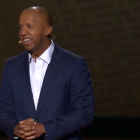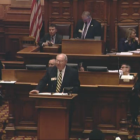
Meth Project Ads Effective at Preventing Drug Use, Study Says
|
The Meth Project’s graphic ads are effective at deterring meth use, according to new research by the W.P. Carey School of Business at Arizona State University. The new study, “How Disgust Enhances the Effect of Fear Appeals,” compared ads that rely on disgust and fear with ads that use fear alone as the deterring element. Researchers showed a series of three ads to a group of college students. Each of the ads had an identical message, but the images were different. Those that relied only on an element of fear did not lead to immediate changes in attitudes or behavior.








